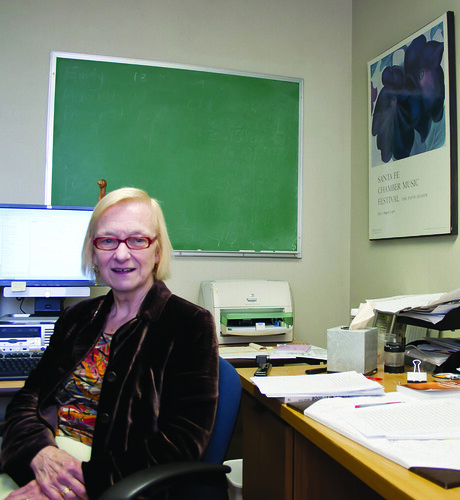Sociology professor Julia Ericksen has dedicated her academic life to studying the difficulties women often face in a male-dominated world. Ericksen, who has been at Temple for 35 years, is responsible for developing some of the gender-focused courses taught in the department today.

Ericksen’s personal life has heavily influenced her research, so when she was diagnosed with breast cancer, she interviewed 100 women also affected by the disease and wrote a book to help guide herself and others through the difficult time in their lives. Her book, “Taking Charge of Breast Cancer,” explores how women deal with a beatable disease often thought of as a death sentence. Currently, Ericksen is channeling a passion of hers and writing a book about ballroom and Latin dance.
The Temple News: How did you make the shift from the topic of breast cancer to the focus of your new book, ballroom and Latin dance?
Julia Ericksen: I like to write about things that I’m interested in. I had been taking dance lessons, and I thought, “I have one more book left in me, and I’d like to hang around dance studios.”
TTN: What do you find so interesting about this topic?
JE: The gender relationship in dance is extremely interesting because on the one hand, American men aren’t supposed to dance. It’s the only world I’ve ever been in where men have to come out as heterosexuals all the time. At the same time, the dance itself is highly gendered, so it is both transgressive and very complicit at the same time.
TTN: Do you think the role of men in ballroom dance is changing as gender roles change in society?
JE: [Men] present themselves in charge so there are lots of ways that are kind of traditional and masculine. At the same time, they do a lot of looking after women. They develop a lot of what you might think are female attributes. I can come to work with a new haircut, a new pair of glasses and a new dress, and nobody notices, but you go in the dance studio, and it’s like, “Oh, I love your hair!” Men do it all the time. They are very responsive, so they are like women’s idea of what a real man should be.
TTN: What about the role of women?
JE: The women are the opposite because it’s harder for women to make a living. They are often moving from place to place dancing with a new partner each time. They are working-class women who have given up the idea of marriage. They are not going to have kids. They are focused on their careers. So most of them make their living teaching. Now they have to teach men to dance. He’s supposed to be in charge, but [women are] the ones who know how to do it.
TTN: What do you think about shows like “Dancing with the Stars” that are attempting to bring this tradition back?
JE: Well I’ve stopped watching it because they can’t really teach someone to dance in that short a period of time, so then they do a lot of posing as opposed to really teaching people how to use their feet and find their core. Plus, I didn’t know any of the stars. I used to tell people that I knew who all of the dancers were and none of the stars. I just got tired of it.
TTN: What is your favorite type of dance?
JE: The type of dance I’m doing at the moment – that’s the one I like the best.
Kate Hartman can be reached at katelynn.hartman@temple.edu.



Currently dancing in the grand ballroom of Webster Hall while holding a large pizza. The girls are all over me.
Great Article! Looking forward to the book!